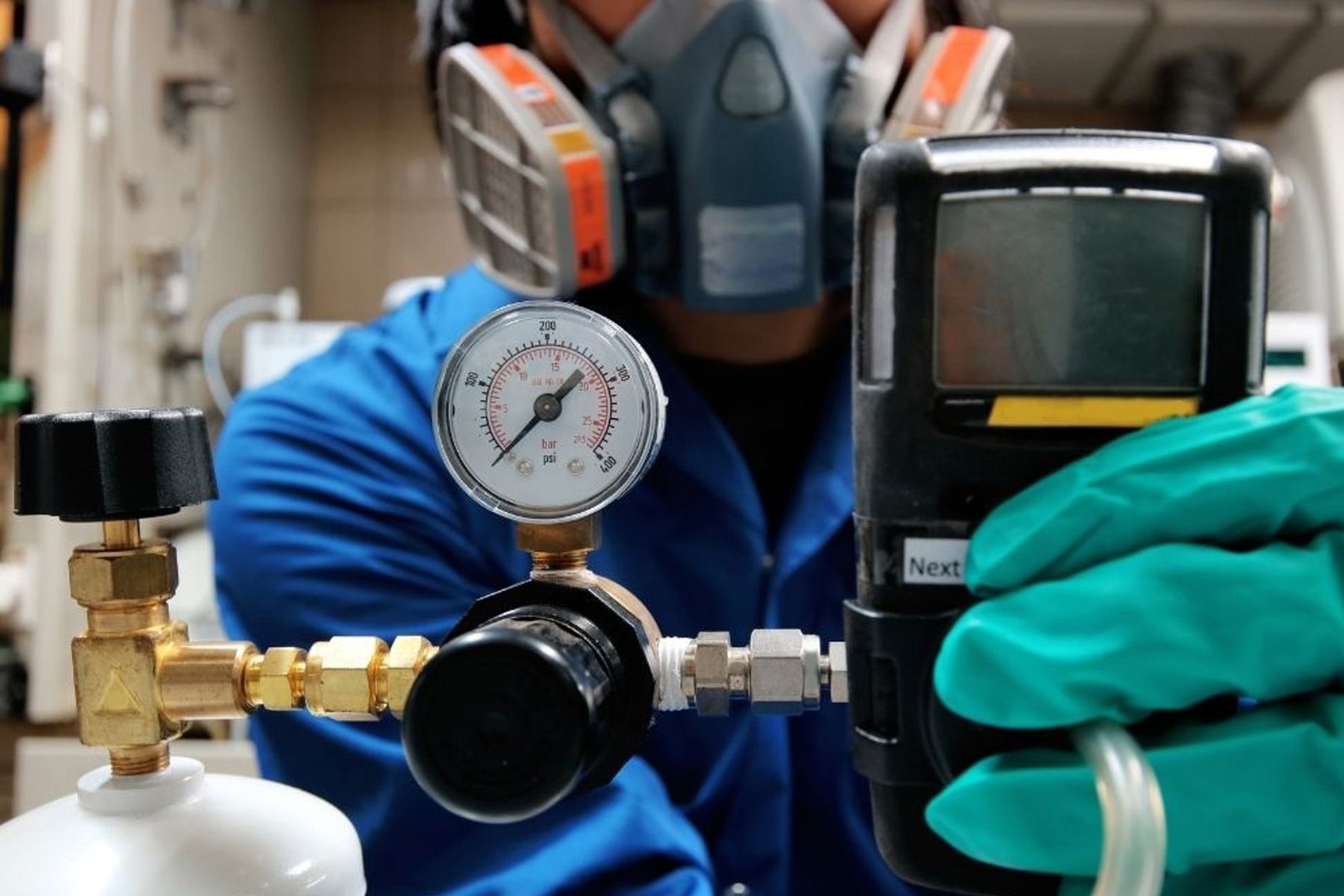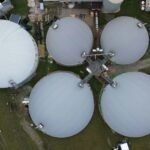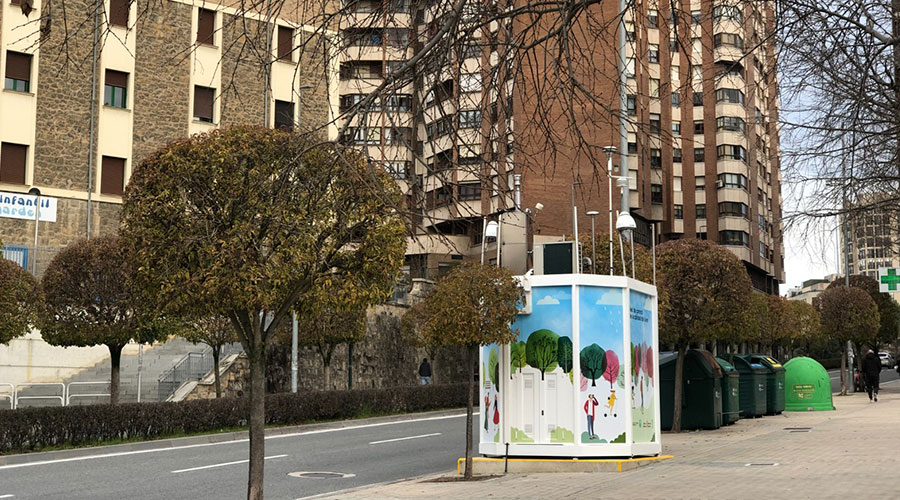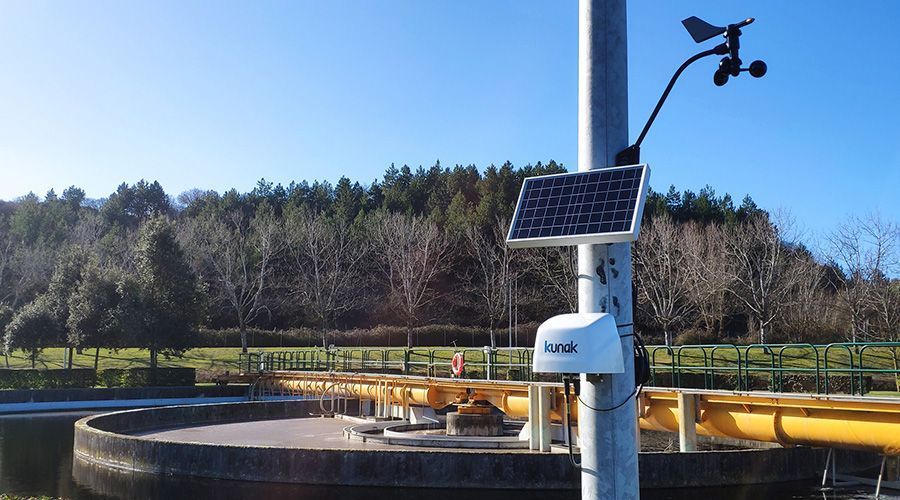Introduction: why calibration is the cornerstone of environmental control
“An uncalibrated measurement is an assumption.
A calibrated measurement is scientific truth.”
In the field of environmental monitoring, accuracy is not a luxury, it is a necessity. Strategic decision-making, urban planning, regulatory compliance, and even public health protection depend on the reliability of the environmental data obtained. In this context, calibrating air qualityAir quality refers to the state of the air we breathe and its composition in terms of pollutants present in the atmosphere. It is considered good when poll...
Read more sensors becomes an essential process to ensure their accuracy and reliability over time.
Kunak, as a leading company in environmental monitoring, has developed a rigorous Quality Control / Quality Assurance (QC/QA) system to ensure that each Kunak AIR station delivers robust, traceable, and internationally comparable measurements.
The essence of calibration: turning signals into certainty
What is sensor calibration?
Calibration of air quality sensorMeasuring air quality is essential for improving human and environmental health. Changes in the natural composition of the air we breathe are common in ind...
Read mores is a fundamental technical process aimed at ensuring that the values recorded by the sensor accurately reflect the true concentration of pollutants present in the environment, just like certified reference instruments. This process enables:
- Elimination of systematic errors.
- Compensation for sensor drift over time.
- Adjustment of the sensor’s sensitivity to the target gas.
- Guaranteeing traceability to international reference standards (European Directive 2024/2881, USEPA 40 CFR Part 53).
Why is calibration necessary?
- Accuracy and reliability: Sensors—especially electrochemical ones (detecting gases through chemical reactions at electrodes), optical ones (measuring airborne particles using laser or LED light), or NDIR sensors (non-dispersive infrared, used to measure gases like CO₂ by detecting infrared radiation absorption)—may exhibit variations in behaviour due to factors such as temperature, humidity, or ageing. Calibration corrects these deviations to ensure data quality.
- Informed decision-making: Institutions, industries, or municipalities need reliable data to implement environmental policies, trigger alerts, or inform the public.
- Regulatory compliance: In many cases, data must comply with legal and regulatory requirements (such as those established by the European Union or the US EPA).
- Comparability between devices: Only a calibrated sensor can guarantee its data are comparable with those of other measurement systems.
Benefits of calibrating an air quality sensor
- Greater confidence in the data.
- Improved ability to detect anomalies or leaks.
- Compliance with international standards.
- Improved operational and environmental efficiency.
What happens if sensors are not calibrated?
- Erroneous or inconsistent readings.
- Poor or costly decisions.
- Loss of credibility with clients, authorities, or affected parties.
- Health and environmental risks if pollution is underestimated.
Air Quality Innovation in Just 1 Click
Stay informed about the air you breathe!
Subscribe to our newsletter to receive the latest updates on environmental monitoring technology, air quality studies, and more.
How Kunak ensures reliable data: an overview of its quality and calibration process
Trust in air quality data starts long before a station is put into operation. At Kunak, every sensor undergoes a comprehensive and rigorous Quality Control / Quality Assurance (QC/QA) process, divided into several essential stages carried out from lab assembly through to the end of its life cycle.
This is a Standard Operating Procedure (SOP) covering both factory calibration and field maintenance, guaranteeing high-precision data throughout the sensor’s entire lifecycle. Let’s take a closer look at how it works:
1. Sensor selection: choosing the best from the start
The first step in the process is as fundamental as it is logical: to ensure that only sensors of the highest quality are incorporated into each smart cartridge. Kunak does not manufacture sensors from scratch, but partners with the world’s top OEM manufacturers, carefully selecting only those that meet the strictest technical and reliability standards.
2. Characterisation: simulating the real world in the lab
Once selected, each sensor is placed in a controlled laboratory environment where various real environmental conditions are recreated: from hot, dry days to cold, very humid climates. Why? Because sensors can behave differently depending on the environment, and it is essential to know and understand their behaviour before deploying them in the field.
During this phase, Kunak’s technical team thoroughly analyses the sensor responses and applies an algorithm designed to compensate for deviations caused by environmental conditions in the measurements — that is, it corrects for temperature, humidity, and pressure effects. This ensures that the sensor provides more stable and accurate readings, whether installed in Norway or an industrial plant in southern Spain.
3. Factory calibration: certified precision from day one
With the sensor characterised, the process moves on to factory calibration. Here, a known concentration of the target gas is injected and the sensor’s response adjusted. The goal is simple but crucial: for the sensor to measure as closely as possible the actual pollutant concentration in the environment where it will be deployed.
This calibration process is carried out individually, cartridge by cartridge, and recorded and stored in the internal memory of each smart cartridge. This means that when a client receives a Kunak AIR station along with the cartridges they have ordered, these have already been adjusted and verified.
Each cartridge is also delivered with its own calibration certificate, assuring users that the sensor has undergone rigorous control, validated under controlled conditions, and is ready to provide reliable measurements from the moment it is deployed in the field.
How is a Kunak AIR station calibrated?
The accuracy of the data provided by a Kunak AIR station is not a matter of chance, nor is it based on assuming that “the sensor simply works well.” It is the result of a meticulously designed process in which calibration plays a central role, both in the factory and after deployment in the field. To fully understand this, it is important to note that once the sensor is installed in the field, Kunak offers various calibration and correction methods, tailored to the client’s needs, the environment, and the type of pollutant to be measured.
Below we explain these methods simply but thoroughly.
Type A1 calibration: Co-location with a reference station
This is the most robust and widely used option when the highest accuracy is sought.
It involves placing a Kunak AIR station alongside a certified reference measurement station, authorised by environmental authorities. Both stations collect data simultaneously over a defined period (usually several days or weeks).
Once the data has been collected, differences between the two devices are analysed and adjustments made to minimise discrepancies between the station data and Kunak sensor readings. This process enables:
- Precise adjustment of the baseline (the zero-concentration point).
- Adjustment of the span (the sensor sensitivity).
It is like tuning a musical instrument next to a perfectly tuned piano: if the piano plays an “A” at 440 Hz, your instrument must sound exactly the same. If not, you adjust it. That’s how co-location works.
This method is recommended for new critical installations, audits or deployments in highly regulated environments. Unfortunately, co-location with reference stations is not always possible, so Kunak offers another equally robust option.
Type A2 calibration: Certified gas cylinders
Similar to reference instrument calibration, Kunak devices can be calibrated using certified gas cylinders under ISO standards (such as ISO 6141) or standards like those from NIST (National Institute of Standards and Technology).
This method uses a device called a accessories/#gashood">gashood, which channels gas from the cylinder directly to the sensor. This process enables the sensitivity (span) to be checked and adjusted.
This system is ideal for laboratories or industrial facilities with certified gases available, or for recalibrating stations on site without dismantling and sending them back to the factory.
Type B corrections: when no external references are available
Although calibration always relies on an external standard, Kunak has developed smart and effective tools to correct deviations when no reference data is available. These corrections do not allow for sensitivity adjustment, but they do allow for baseline correction, helping to reduce errors caused by sensor drift over time.
🔹 B1. Manual baseline correction: using the station’s historical data, the zero point is adjusted when sensor drift over time is detected. This correction reduces systematic measurement errors and improves the consistency of recorded data.
🔹 B2. Automatic baseline correction (ABC): some sensors, such as Type A CO2 or CH4 sensors, incorporate an algorithm that automatically detects background value deviations and adjusts them without human intervention. This maintains long-term stability without external reference.
🔹 B3. MCERTS calibration factors: in the case of particulate matter sensors (PM1, PM2.5, PM10), Kunak applies pre-established correction factors during the MCERTS certification process, ensuring high-quality indicative data.
What makes Kunak’s approach unique?
What makes this system unique is that each smart cartridge contains all relevant information stored in its memory.
This allows any cartridge to be installed or replaced without losing accuracy or requiring complex new configurations. In less than two minutes, a station can change sensors and continue measuring, minimising data loss.
Thanks to the Kunak AIR Cloud platform, this entire process can be done remotely: configuring, correcting, updating and validating without travel or direct device intervention.
In summary, calibrating a Kunak AIR station is not a rigid, closed process but a flexible system that adapts to the environment, pollutant type and client resources. From co-location with reference stations to automated self-corrections, each option is designed to maximise data reliability, even in real, changing conditions.
“Kunak’s approach combines the best of the laboratory with the reality of operational environments.”
Calibration VS Machine Learning: a necessary warning
In a world where artificial intelligence (AI) and Machine Learning (ML) promise magical solutions to almost any problem, these technologies have also entered the field of air quality. Nowadays, it is common to find low-cost environmental monitoring systems claiming to offer “accurate data” thanks to algorithms trained using machine learning techniques.
But is this really reliable when it comes to air quality sensors? Can an AI-based model replace scientific, traceable calibration? Kunak’s experience, and the technical evidence accumulated over years, clearly shows that it cannot.
What does Machine Learning (ML)-based calibration involve?
This type of calibration is based on training a statistical or algorithmic model with data from a sensor compared to those from a reference station. The model learns to identify the correct pollutant concentrations from the sensor’s raw values, also considering variables such as temperature or humidity.
At first glance, this sounds promising. However, it hides a critical limitation: the model is only valid for the place and time where it was trained. To obtain quality data in different locations, it would be necessary to train each sensor individually in the context where it will be deployed, which is impractical. Furthermore, there are variations between sensors of the same type, even if they are from the same manufacturer, so applying the same ML model to two sensors could yield different results.
What is the problem when environmental conditions change?
Imagine training a model at a station located in central Madrid. That environment has specific conditions: traffic, weather, average ozone concentration, daily patterns, etc. The model adjusts to all that.
However, for the same location, e.g. in summer and winter, the climatic conditions change completely, therefore:
- The proportion and behaviour of pollutants changes. For example, there may be more ozone and less nitrogen dioxide.
- The atmospheric conditions differ. Ventilation, shade, humidity and temperature can vary significantly.
- The model no longer works. The algorithm, which seemed very accurate, begins to give incorrect readings or worse, plausible but wrong ones.
“A well-trained model can become a source of error if applied outside its original context.”
This phenomenon is known as “geographical overfitting” and is especially problematic in complex environments such as industrial plants or certain urban areas, where the spatial distribution of pollutants varies greatly, even between nearby locations.
How does Kunak solve this limitation?
Kunak has chosen a more robust approach, based on traceable, reproducible scientific calibration, not on black-box models. Its solution rests on three key pillars:
🔹 Embedded algorithm with environmental correction
Kunak sensors include an integrated algorithm that corrects in real time the effects of temperature, humidity, and pressure across the full range of environmental conditions, without the need for constant external data access or additional training. The result is a sensor that provides reliable data regardless of where it is located.
🔹 Individual calibration of each sensor
Each smart cartridge is calibrated with a standard gas. This ensures that each sensor’s response is accurate across the full expected concentration range.
🔹 Data quality ensured over time
Thanks to remote correction tools and field recalibration options, sensors can maintain their accuracy over time, guaranteeing quality data throughout their lifespan. This is not possible when machine learning models are used for calibration, as they cannot detect or correct gradual sensor sensitivity loss—a phenomenon not directly observable nor predictable from historical data.
What risks are avoided by not relying solely on Machine Learning for calibration?
- Silent errors: An ML model may continue producing numerically “nice” values even when they are completely off.
- Lack of traceability: It is impossible to rigorously demonstrate how a specific concentration was obtained or verify compliance with international standards.
- Technical and regulatory distrust: Regulators require traceability, and AI models do not always meet this requirement.
- Dependence on historical data: Without a solid prior database from the location where the sensor will be deployed or a reference station, the model cannot be developed.
“In air quality, precision is not trained, it is calibrated.”
AI is a tool, not a guarantee
Machine Learning can be useful to support data analysis or detect temporal patterns. But it cannot replace scientific calibration based on recognised standards and traceable procedures.
At Kunak, the approach is clear: robust sensors, individually calibrated, with transparent algorithms, designed to provide reliable data anywhere in the world, without relying on assumptions or models trained in different contexts.
Because when it comes to measuring the air we breathe, it is not enough for the measurements to look right, they must be right.
Advantages of Kunak calibration: beyond compliance
✔ Near-reference data at low cost
Thanks to its patented design of individually calibrated smart cartridges, Kunak AIR devices deliver results very close to reference instruments, with much lower investment than traditional fixed stations.
✔ Traceability and confidence
Each cartridge includes factory information (sensor type, manufacture date, calibration results). When inserted, the station recognises it automatically and the sensor begins measuring, providing quality data without manual intervention.
✔ Flexibility and sustainability
Thanks to the plug&play system, sensors can be easily replaced without sending the equipment back to the factory. Additionally, electronic components are recyclable, reinforcing the brand’s environmental commitment.
✔ Remote management
Through Kunak AIR Cloud, technicians can:
- Calibrate sensors using the calibration tool.
- Apply baseline adjustments remotely.
- Monitor the status of each sensor (battery, signal, anomalies).
- Automate alerts in case of deviations.
Practical maintenance recommendations
Kunak recommends following a maintenance and calibration schedule to ensure maximum accuracy:
| Cartridge | Type of calibration / correction | After deployment | Every 3 months | Every 12 months | Recommended replacement |
| CO, NO, NO2, O3, H2S, SO2, NH3, HCl | A1, A2, B1 | 🔵 | 🔵 | ⬛ | 24 months |
| CO2, CH4 | B2 | Automatic | 4 years | ||
| VOCs | A2 | — | 🔵 | ⬛ | 10,000 hours |
| PM (particles) | A1, B3 | 🔵 | — | Inspection and cleaning | 24 months |
| ⬛ Mandatory 🔵 Highly recommended (for optimal performance) | |||||
“What isn’t calibrated becomes contaminated with uncertainty.”
Conclusion: data quality is a responsibility
Calibration is not just a technical matter—it is essential. It is a commitment to data truth, public health, and the environment. Thanks to its thorough quality assurance and control process, Kunak offers its clients access to reliable, traceable, and actionable data.
Against improvised approaches and opaque models, Kunak bets on scientific traceability, technical transparency, and operational adaptability.
Because when it comes to air quality, accuracy is non-negotiable. When we talk about measuring the air we breathe, there is much more at stake than just a simple number.









